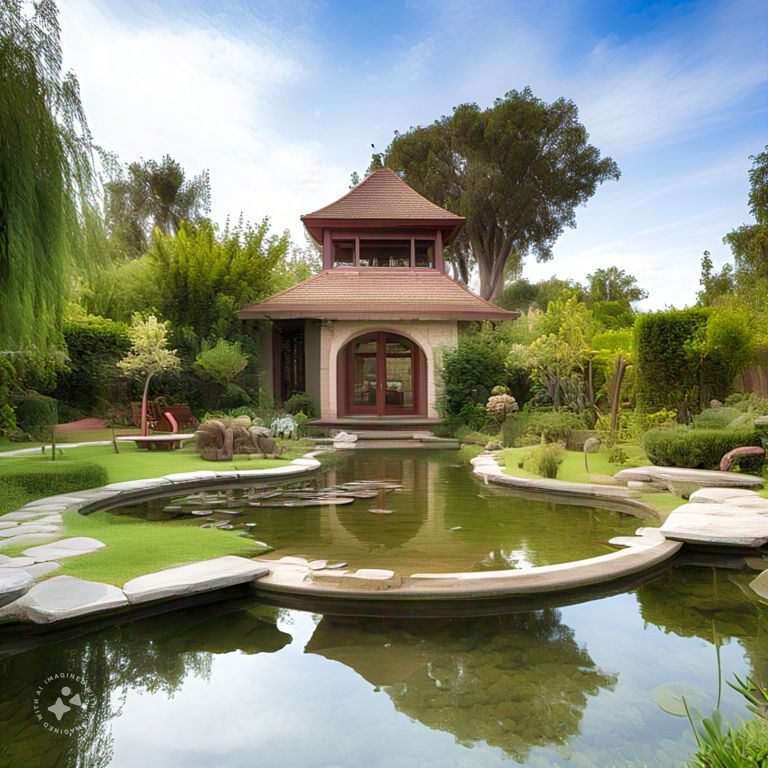The Multifaceted Role of Water in Landscape Design
1. Aesthetic Element
Visual Appeal: Water features such as fountains, ponds, and waterfalls introduce dynamic movement and reflective surfaces, amplifying natural light and creating captivating visuals. For instance, the shimmering reflections in a lily pond can enhance tranquility in a garden.
Soundscapes: Bubbling brooks or cascading waterfalls mask urban noise, creating soothing soundscapes that connect people with nature.
2. Functional Utility
Microclimate Regulation: Water bodies cool down the immediate surroundings through evaporative cooling. Large reflecting pools near buildings, as seen in the Taj Mahal, are classic examples of how water moderates temperatures.
Irrigation Systems: In xeriscaping, water is carefully used to maintain sustainable landscapes with minimal irrigation.
3. Ecological Engine
Habitat Creation: Ponds and wetlands support diverse flora and fauna, acting as biodiversity hotspots. For example, rain gardens in urban parks attract pollinators while filtering pollutants.
Rainwater Harvesting: Incorporating catchment systems allows landscapes to store water for future use, ensuring sustainability in arid regions.
4. Interactive Experiences
Educational Value: Interactive water installations like splash pads or kinetic fountains educate visitors on water’s physics and conservation.
Psychological Impacts of Water in Landscapes
1. Stress Reduction
The mere presence of water has been scientifically proven to reduce stress. Known as “blue space therapy,” water calms the mind, slows the heart rate, and encourages relaxation.
2. Enhancement of Creativity
Spaces designed with water inspire innovation. Architects and creatives often find inspiration in tranquil environments where water is a central element.
3. Sense of Belonging and Connection
Public water features, such as waterfront promenades or fountains in plazas, create communal spaces that encourage social interaction.
4. Spiritual Rejuvenation
Water’s association with cleansing and renewal makes it a powerful tool for meditation and reflection, evident in Japanese Zen gardens and infinity pools overlooking vast horizons.
Nature-Based Solutions (NBS) for Water Conservation
1. Rain Gardens
Rain gardens, designed to slow, collect, and filter runoff, combat urban flooding while creating lush green zones. For example, Portland’s extensive rain garden network manages over 9 billion gallons of stormwater annually.
2. Permeable Surfaces
Using permeable pavers or grassed swales reduces runoff and facilitates groundwater recharge.
3. Wetland Restoration
Restoring natural wetlands not only conserves water but also enhances carbon sequestration and biodiversity.
4. Terracing and Contouring
In hilly terrains, terracing slows water flow, reducing soil erosion while creating zones for farming or planting.
Integrating Technology with Water in Design
1. Interactive Installations
Smart Fountains: Programmable fountains like the Dubai Fountain use lights, music, and water jets to create mesmerizing performances.
Touch-Responsive Pools: Imagine a pond that ripples or changes color based on touch or movement, making water a medium of interaction.
2. Water Recycling Systems
Graywater systems integrated into landscapes filter and reuse household water for irrigation, showcasing technology’s role in sustainability.
3. Digital Augmentation
Augmented reality (AR) can turn static water features into storytelling tools. For instance, AR projections onto water can narrate a site’s historical or ecological significance.
4. Hydroponic and Aquaponic Systems
Innovative farming techniques combine water management with greenery to create self-sustaining urban farms that can double as landscaped art pieces.
Examples of Water in Landscape Design
1. Changi Jewel, Singapore
The Rain Vortex, the world’s tallest indoor waterfall, combines cutting-edge technology with biophilic design to create a stunning visual and auditory experience. It cools the air while recycling rainwater.
2. Cheonggyecheon Stream, Seoul
This urban renewal project transformed a paved-over stream into a vibrant linear park. It regulates temperature, reduces urban heat, and offers a serene escape amidst the bustling city.
3. Floating Gardens of Xochimilco, Mexico
These ancient water channels showcase sustainable farming practices and biodiversity conservation, offering inspiration for integrating heritage into modern designs.
Conserving and Slowing Down Water
Architects can embrace water-sensitive urban design (WSUD) principles, incorporating techniques like bioswales, retention basins, and infiltration trenches. These strategies not only slow water down but also purify it, mitigate floods, and recharge aquifers.
Conclusion: Designing Tomorrow’s Liquid Landscapes
Water in landscape design transcends functionality to become a powerful medium for sustainability, aesthetics, and psychological well-being. Architects and designers must embrace innovative approaches to harness water’s full potential while conserving this precious resource. By blending nature-based solutions with technology, we can create landscapes that are interactive, immersive, and inspiring.
Are you ready to integrate the magic of water into your next project?
Let us help you design resilient, sustainable landscapes that inspire and delight. Whether you're planning a private villa, a public park, or a commercial space, our expertise in innovative water features and ecological solutions can transform your vision into reality.
👉 Contact Us to start your journey toward designing breathtaking water-centric landscapes.
Tags: #LandscapeDesign #WaterInDesign #Sustainability #NatureBasedSolutions #InteractiveDesign #PsychologyInDesign #GreenArchitecture




No comments:
Post a Comment